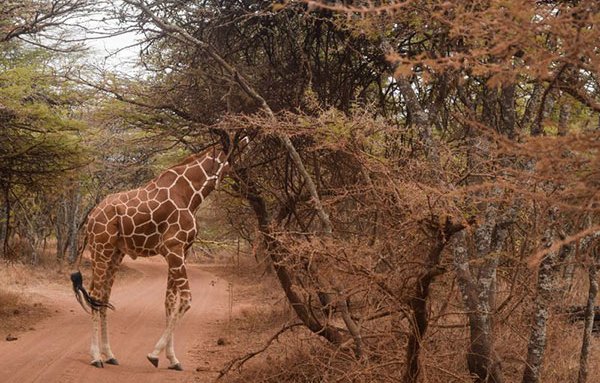New research led by African scientists has confirmed that giraffes are not a single species but four, a groundbreaking reclassification that is set to transform global conservation strategies with Africa at the very heart of their protection.
At Kenya’s Naboisho Conservancy, researcher Jowel Mulama begins his mornings scanning the savannah. Among the lions, elephants, and zebras, it is the giraffes that always command his attention.
“They are gentle but at the same time commanding,” he said. “Every time you watch them, you notice something new: their grace, their height, the way they interact. To me, giraffes have always been different from any other animal.”
Now science agrees. After more than a decade of DNA sampling, morphological studies, and tracking giraffe movements across Africa, experts have concluded that giraffes are not one species, but four.
On August 21, 2025, the International Union for Conservation of Nature (IUCN) formally recognised Northern, Reticulated, Masai, and Southern giraffes as distinct species. The announcement, made in Windhoek, Namibia, by the IUCN Species Survival Commission’s Giraffe and Okapi Specialist Group, overturned decades of classification that treated giraffes as one species with nine subspecies.
Experts have described the decision as the most significant change in giraffe taxonomy in more than a century, a shift that will directly shape protection strategies for the world’s tallest land mammal.
“This revision reflects the best available science and provides a globally standardized framework to inform conservation,” said Michael Brown, Co-Chair of the IUCN Specialist Group and Science Coordinator at the Giraffe Conservation Foundation (GCF). “Recognising these four species is vital for accurate Red List assessments, targeted action, and coordinated management across borders.”
The findings draw on genetic evidence showing four reproductively isolated lineages that diverged hundreds of thousands of years ago, supported by morphological and geographical analysis. For conservationists, this is not a technical footnote but a lifeline.
The State of Giraffe 2025 report by GCF estimates there are about 117,000 giraffes left globally a 30% drop since the 1980s. Yet their fortunes differ sharply. Southern giraffes are thriving at nearly 69,000, Masai giraffes remain stable at about 44,000, Reticulated giraffes have rebounded to just over 20,000 after steep losses, while Northern giraffes are critically endangered with barely 7,000 remaining.
“This unevenness is exactly why this reclassification matters,” Mulama explained. “Each species faces different pressures, and conservation must be tailored to those realities.”
Across Africa, community-led initiatives have proven critical. In Namibia, communal conservancies have helped Angolan giraffe numbers rise fivefold since the early 2000s. In Kenya, Reticulated giraffes are recovering thanks to local conservancies tying eco-tourism to protection. In Niger, the West African giraffe has grown from just 49 in the 1990s to nearly 660 today, thanks to community patrols and translocation programs.
The Southern giraffe has seen its strongest gains in South Africa and Namibia, where private game reserves and communal conservancies drive both protection and eco-tourism revenue. Masai giraffes remain stable in Kenya and Tanzania, supported by wildlife corridors that connect parks with village lands. Reticulated giraffes, once in sharp decline, are now a conservation success story in northern Kenya. But Northern giraffes, particularly Kordofan populations in conflict zones, remain highly vulnerable to poaching and instability.
For scientists and conservationists, the new classification is more than biology it is strategy. Species-level recognition unlocks targeted funding, precise Red List assessments, and more effective action plans.
Mulama, who has spent years observing giraffes in the Masai Mara, sees it as a validation of African expertise as much as African wildlife. “The sampling, the fieldwork, the taxonomic analysis it was all rooted here in Africa,” he said. “This shows that Africa is not just providing the wildlife but also the science and expertise shaping how the world understands it.”
From the plains of Kenya to the deserts of Namibia, from Niger’s community lands to South Africa’s reserves, one message is clear: giraffes are not just one species, and their protection cannot be one-size-fits-all. The world’s tallest mammal has four different survival stories and each one depends on Africa’s people and landscapes.
